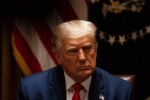An Opening for China, Made in America
Advertisement
Supported by
Guest Essay
By Eric Jacobstein
Mr. Jacobstein served as the deputy assistant secretary of state for Western Hemisphere affairs in the Biden administration.
When President Trump threatened Colombia with new tariffs and visa restrictions during his first days in office, the opportunity was not lost on Beijing. As the crisis between the nations unfolded, China’s ambassador to Colombia posted a pointed message on X: “We are at the best moment in our relations between China and Colombia, which we’ve had for 45 years.”
Secretary of State Marco Rubio, during his five-country tour of Latin America this month, tried to spin Mr. Trump’s emerging approach to the Western Hemisphere as an “Americas first” foreign policy. But Mr. Trump’s long and growing list of shortsighted actions has already undermined that early diplomatic outreach and created an opening in the region for America’s adversaries, most notably China.
Those actions include tariffs on aluminum and steel, the threat of tariffs on our North American neighbors, a foreign aid freeze, a deportation-centric foreign policy agenda and absurd territorial claims. As Mr. Trump alienates our neighbors through threats and ultimatums, Beijing stands ready to step into the void.
Over the past 25 years, China’s economic ties with Latin America have grown at a remarkable pace. In 2000, China was only the seventh-largest export market for the region. Today, China has become South America’s leading trading partner and the second largest for all of Latin America, trailing only the United States. Latin American and Caribbean exports to China surged to approximately $208 billion in 2023 from $112 billion in 2013.
At the same time, Beijing’s no-strings-attached approach to........






















 Toi Staff
Toi Staff Tarik Cyril Amar
Tarik Cyril Amar Andrew Mitrovica
Andrew Mitrovica Sharona Margolin Halickman
Sharona Margolin Halickman Rachel Marsden
Rachel Marsden Patrick Gathara
Patrick Gathara Belen Fernandez
Belen Fernandez Gideon Levy
Gideon Levy Alexey Kupriyanov
Alexey Kupriyanov
